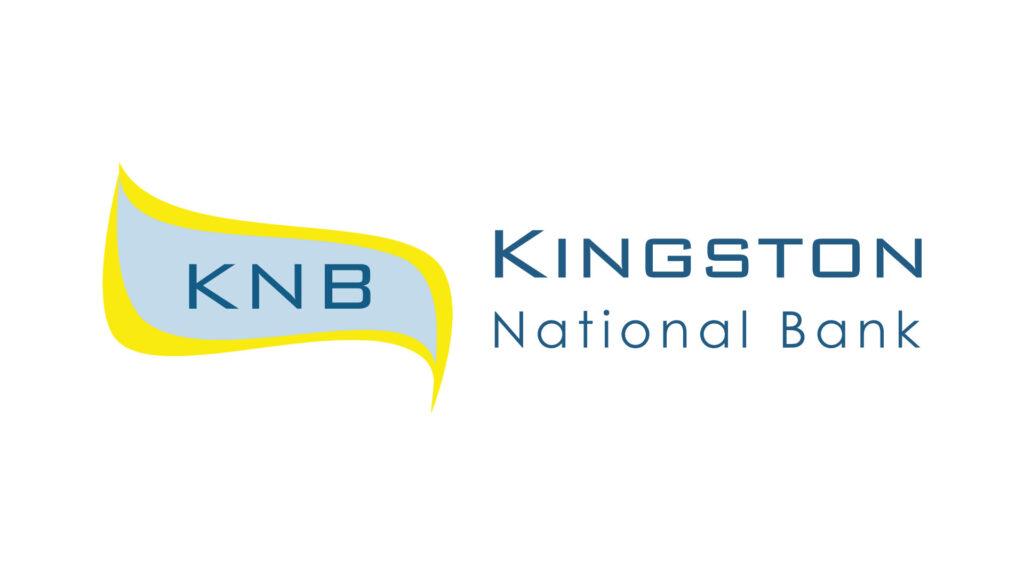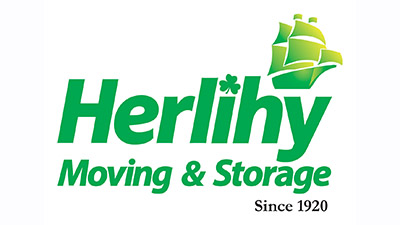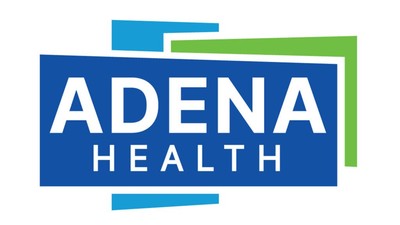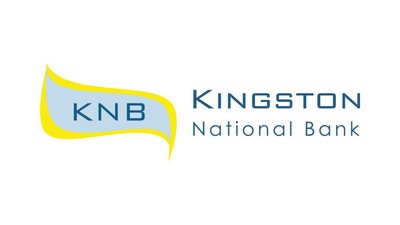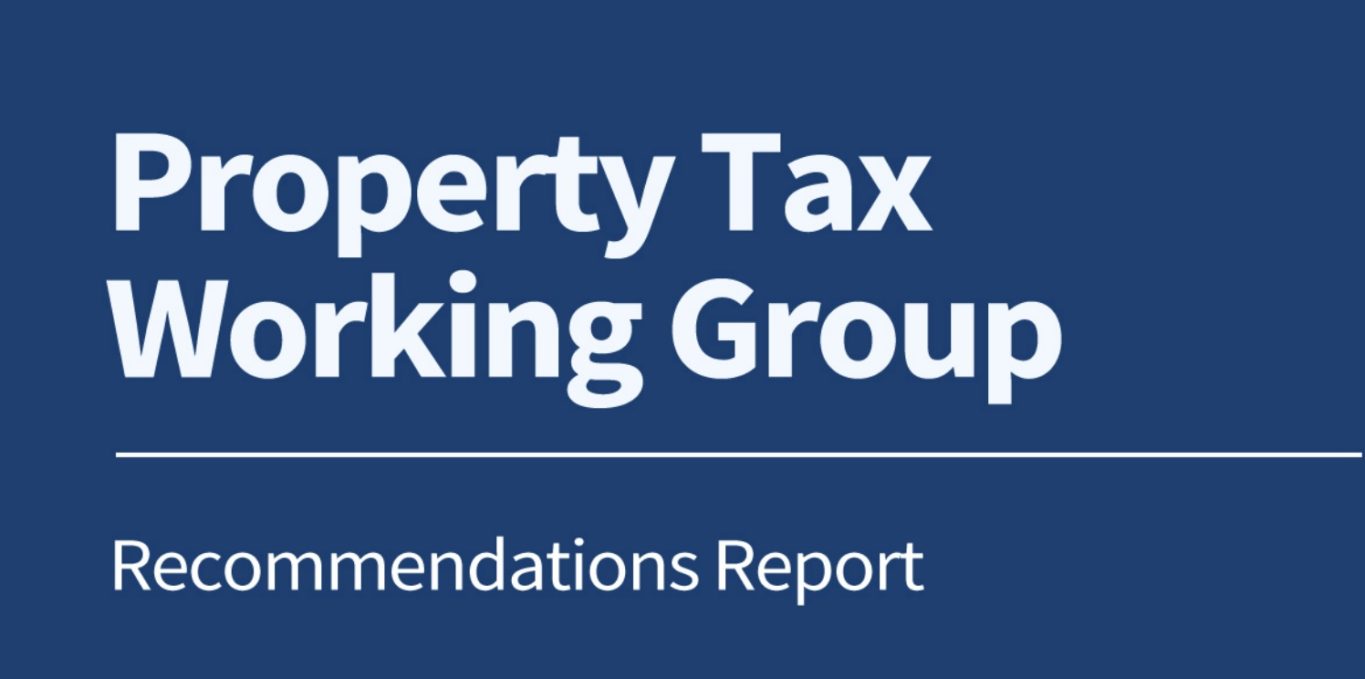
State Working Group Makes Recommendations for Property Tax Reform
Article Presented By Kingston National Bank…
(Columbus) – In recent years, Ohio’s property values have skyrocketed. These increases have led to rising property tax bills that are unsustainable for many Ohio homeowners. Elected officials have been
working to come up with concepts to combat the rise in property tax bills. Of note, the General Assembly formed the Joint Committee on Property Tax Review and Reform which issued 21 recommendations in December 2024. Some of those recommendations were included in the most recent state operating budget in support of this effort. Ohio Governor Mike DeWine took line-item actions on certain provisions, seeking a broader conversation and review of those provisions, and other ideas surrounding property tax reform in Ohio.
Governor DeWine formed this Property Tax Working Group as a result of the recommendations included in the budget to ensure proposals were evaluated from all possible perspectives. Local services like schools, fire departments, law enforcement, and local governments rely on property tax funding, so the Governor formed a working group with local officials representing these perspectives with the mission of proposing recommendations that help lower Ohioans’ tax burden in as cost-effective manner as possible.
The Governor tasked Co-Chairmen Pat Tiberi and Bill Seitz, along with the broad and diverse group of local officials from around Ohio, with reviewing ideas and proposals, hearing from stakeholders, and coming to a consensus on recommendations they believe are achievable, workable, and impactful to Ohioans. The Governor also tasked this group with preparing this report by September 30, 2025.
Recommendations
1. Refine the process and definition of County Budget Commissions, including a timeline from when a levy is passed to when a Budget Commission could reduce said levy. The Property Tax Working Group understands the importance of protecting voter intent and financial stability for local governments. County Budget Commissions have a critical role in providing this oversight on levies. County Budget Commissions must balance the intent of a levy at the time it was voted upon with the financial stability for local governments to ensure property tax relief is given when possible. Therefore, the Group recommends refining the process of County Budget Commissions to act within the best interest of their voters, as well as local government needs by allowing levies they deem “unnecessary” or “excessive” as defined below to be reduced at a minimum of 5 years after the initial levy was approved by voters and 2 years following a renewal of a levy by the voters. The Group also recommends that a public hearing be conducted prior to reducing a levy. Definitions: Unnecessary — “A tax levy or portion thereof is considered unnecessary when it generates more revenue beyond the reasonably anticipated financial needs of the taxing authority for the specific purpose of the levy, after accounting for current fund balances, projected expenditures, and other available funding sources.” Excessive — “A tax levy is considered excessive when the amount or rate of taxation materially exceeds what is required to provide services at a level that is consistent with statutory obligations or community standards.”
2. Limit carry over balances for all taxing districts to 100%. Any carryover balance over 100% would need to be justified in writing to the satisfaction of the County Budget Commission. The Property Tax Working Group understands the close relationship between government entities and property tax. All taxing districts have a duty to their taxpayers to ensure taxpayer dollars are used efficiently and effectively. Therefore, the Group recommends that all taxing districts carryover balances of levy funded dollars be limited to 100% to ensure efficient spending and avoid unnecessary levies. Capping reserves for operating expenses could help promote efficient spending of taxpayer dollars before returning to voters for new levies. Further, the Group recommends that taxing districts with carryover balances exceeding 100% justify the need for that balance in writing to the satisfaction of their County Budget Commission. If the County Budget Commission recommends a reduction, the Group recommends a hearing occur with the County Budget Commission and the taxing district.
3. Enact legislation that eliminates the future use of substitute levies and rename all current substitute and emergency levies to “fixed-sum levies.” Future renewal of a “fixed-sum levy” would apply to the 20-mill floor with continuing substitute levies applying to the floor after five years. The Property Tax Working Group believes that voter transparency for levies must be prioritized. This means that the type of levies available must be limited in type and easily understood. Therefore, the Group recommends that substitute levies and emergency levies should be renamed as ‘fixed-sum levies’, where current substitute levies passed as a continuing levy would apply to the 20-mill floor calculation after five years, and where existing emergency levies will not count towards the floor until their scheduled expiration date, provided it post-dates the next revaluation date. The same would be true for existing levies enacted as a substitute levy with a scheduled expiration date that post-dates the next revaluation. This extended glide path of not more than five years will help local government adjust to the new levy structure created by reason of recalculation of the 20- mill floor. The Group also recommends that newly named fixed sum levies should be authorized to continue the 12.5% rollback if such levies were enacted before the 2013 change in the rollback law or were renewed after that date, because to do otherwise would result in a $96 million real property tax increase across the state.
4. County Commissioners should review and reject or approve any levies being placed on the ballot by county-wide, non-elected entities. The Property Tax Working Group believes that public accountability, fiscal oversight, and democratic representation are vital for property tax reform. Accountability is lost when entities that are not elected place levies on the ballot. Therefore, the Group recommends that County Commissioners, who are elected, review and then approve or reject all proposed levies by non-elected boards before they appear on the ballot to ensure accountability and fiscal oversight. The Group recommends in instances where the levy spans multiple counties that the largest county by population is responsible for approving or rejecting the levy
5. Closing the LLC loophole when buying and/or selling Class I (residential and agricultural) property. The Property Tax Working Group understands that providing fair and equitable opportunities for all Ohioans is critical to property tax reform. The “LLC loophole” is a method used to avoid county conveyance fees and defer property tax reassessments when buying and selling properties. This practice obscures the true value of property and makes it difficult for county auditors to accurately value property as required by the Ohio Constitution. Therefore, the Group recommends that LLCs be required to buy and sell all Class I (residential and agricultural) real estate under the same rules that apply to individual Ohioans and their families when purchasing a home. Such a recommendation ensures all residential real estate transactions incur the same county conveyance fees and property tax reassessments—promoting fairness and equity for taxpayers and homeowners.
6. Support House Bill 186, as amended by the House Ways & Means Committee in June 2025, and extend its principles to inside millage. The Property Tax Working Group has found in their review of pending legislation before the General Assembly that many bills exist to provide property tax relief for Ohioans. The Group recommends that Substitute House Bill 186 (Sub. HB 186), sponsored by Representatives David Thomas and Jim Hoops, be passed and enacted as amended in June 2025. Sub. HB 186 reduces property taxes by providing a tax credit back to property owners in a school district on the 20-mill floor or a joint vocational school district (JVSD) on the 2-mill floor. If the increase in tax revenue collected by the school district or JVSD due to the floor exceeds increases in the GDP deflator, property owners would receive a tax credit. The amount of the credit is calculated every three years during a county’s sexennial reappraisal or triennial update, and a district’s revenue growth from the floor may not exceed the rate of inflation over the prior three years. The goal of the bill is to limit revenue windfalls in districts on the floor to provide property tax relief to Ohioans. While the Group prefers HB 186 as introduced, the Workgroup supports the passage of HB 186 as amended by the House Ways & Means Committee in June 2025. The Governor’s Property Tax Group also believes the General Assembly should further amend HB 186 to apply to inside millage. In doing so, consideration should be given to local government inside millage beneficiaries to ensure their fiscal stability if property values should decline.
7. Support House Bill 156, with an amendment. The Property Tax Working Group has found in their review of pending legislation before the General Assembly that many bills exist to provide property tax relief for Ohioans. The Group recommends that House Bill 156 (HB 156), sponsored by Representatives Thomas Hall and Dani Isaacsohn, be amended so the tax credit is the difference in increase from the previous taxing year, not accumulative from the base year, and then be passed and enacted. HB 156 creates a property tax credit for senior and disabled homeowners with limited incomes. This credit would reduce the overall cost of implementing the tax credit while still providing relief. Please see Appendix A for the scoring the Ohio Department of Taxation has done on this recommendation.
8. Implement reforms to levy ballot language that promote transparency and clarification when a voter is voting on a levy. The Property Tax Working Group understands the importance of providing full transparency to Ohio’s voters and believes that providing a further level of transparency on levy ballot initiatives furthers this goal. Therefore, the Group recommends that the Secretary of State approve an easy to understand summary of what the levy does and the impact to the taxpayers’ future property tax liability if supporting the levy is necessary. This level of transparency ensures that the taxpayer has a full understanding of what their property tax bill will look like with the passage of the levy.
9. Restrict emergency levies to entities under fiscal caution, watch or emergency as defined by the Auditor of State and impose a time limit. The Property Tax Working Group understands that fiscal emergencies do occur for school districts, which drives the need to preserve emergency levies. However, the Group believes that the use of an emergency levy should be used in limited and extreme circumstances only. Therefore, the Group recommends that restrictions to emergency levies be placed to ensure transparency and accountability to taxpayers. These restrictions include limiting emergency levies to school districts under fiscal caution, watch, or emergency as defined by the Ohio Auditor of State and the Ohio Department of Education and Workforce, in addition to an “act of God” situation. Further, the Group recommends that emergency levies not be renewable, are limited to five-year duration, and will count towards the 20- mill floor calculation.
10. Explicitly authorize levy boards to retain interest earned on their levies, while granting county commissioners the ability to recover the indirect costs incurred by the county in providing services to the board. The Property Tax Working Group understands the need to provide transparency to taxpayers as well as ensure fiscal responsibility and accountability. Giving boards direct control over funds generated from a voter-approved initiative is critical; however, this Group recognizes that the County Commissioners provide support for administering and implementing passed levies that incur costs to the county. Therefore, the Group recommends that levy boards retain interest earned on their levies while also ensuring County Commissions have the ability to recover the indirect costs incurred by providing services to the board.
11. Improve penalty and interest processes on delinquent property taxes for qualifying homeowners. The Property Tax Working Group recognizes that an increase in property valuations can lead to Ohioans’ inability to pay their property tax bill in a timely manner. Adding fees and penalties on top of high property taxes, while it serves as an incentive to pay timely, can hurt the taxpayer more Therefore, the Group recommends improvements to penalty and interest processes associated with taxpayers who are delinquent on their property tax bill. See Appendix B for a more detailed breakdown of those recommendations.
12. Implement a Tax Deferral Program for Qualifying Seniors. The Property Tax Working Group believes that Ohio’s seniors are the most significant population that is experiencing severe hardship with the current property tax structure. Therefore, the Group recommends the creation of a Property Tax Deferral Program where eligibility should include:
1. Owning and occupying a residential property for at least 10 years,
2. Being 65 years of age or older or disabled, and
3. Meeting the same income thresholds as the homestead program. The Group asked the Ohio Department of Taxation to estimate the cost of a deferral program. Estimated costs assume full participation and that the first-year deferral was available was tax year 2020. These estimates are based on total observed tax growth in reappraisal/update years. Repayment is not modeled or included in these estimates: The cost estimates below assume that all growth from 2019 is deferred for all eligible taxpayers. Actual cost would depend on taxpayer participation. Tax Year Estimated cost to State (2020 -$21 million), (2021 -$27 million), (2022 -$81 million), (2023 -$121 million), (2024 -$144 million)
13. Property tax exemptions should be regularly reviewed and evaluated. The Property Tax Working Group recommends that the regular review and evaluation of various property tax exemptions, on their effectiveness and impact to Ohioans. This review and evaluation could be done by either the General Assembly, or another entity designated by the General Assembly. The Group recommends that tax exemptions failing to meet their original purpose be reconsidered or rolled back to increase revenue for local services and to ensure exemptions remain aligned with today’s property tax landscape. Increased revenue should be used by the General Assembly to provide further property tax relief for Ohioans.
14. Sexennial Reappraisal and Triennial Update schedule to balance reassessments across counties and years. The Property Tax Working Group believes that equity is a key component to property tax relief. Currently, Ohio requires a sexennial reappraisal and triennial update to ensure that property values are current for tax purposes. The Group understands that the current cycle leads to uneven distributions of reappraisal work and impacts taxpayers differently based on their country’s specific cycle. Therefore, the Group recommends that the Department of Taxation rearrange when counties experience their sexennial reappraisal and triennial update to provide this balance and equity for Ohio’s taxpayers.
15. Support House Bill 154. Require that Ohio’s school districts have the ability to disapprove of a Community Reinvestment Area (CRA) program that will impact the school district. The Property Tax Working Group has found in their review of pending legislation before the General Assembly that many bills exist to provide property tax relief for Ohioans. The Property Tax Working Group understands that providing residential property tax exemptions encourages investment in specific areas. However, such economic growth must be reviewed by the school district that will be impacted by the residential growth. Therefore, the Group recommends support of House Bill 154, sponsored by Representatives David Thomas and Chris Glassburn. The bill would ensure school districts have the ability—like they already do for commercial and industrial projects—to disapprove of a residential CRA under those same circumstances used for commercial and industrial developments. Without providing this voice to school districts, current property taxpayers and negatively impacted and incur additional costs to make up for the loss of property tax revenue these CRAs are exempted from contributing is included in House Bill 154, sponsored by Representatives David Thomas and Chris Glassburn.
16. Codify limits for the creation of Residential Stability Zones. The Property Tax Working Group understands that the General Assembly is considering establishing Residential Stability Zones, which is a tool for local governments to designate specific areas where homeowners can receive partial property tax exemptions. This concept is designed to address property value increases and the rise in declining homeownership, and has been included in Senate Bill 42, sponsored by Senators Michele Reynolds and Hearcel Craig. Therefore, the Group recommends support of Senate Bill 42, with an amendment that limits for county, city, and home rule township residents to limit their property tax by 50% reduction in assessed value. Specifically, the program should: 1. Target seniors below 80% of Area Median Income (AMI) in owner occupied homes that have been owned and lived in the home by that owner for 20 years. 2. Give school board veto power. 3. Providing limits on the number of census tracts for those included in the program.
17. Encourage the Governor to form a working group to look at and analyze the efficiencies of the various levels of government. The Property Tax Working Group recognizes that the State of Ohio has one of the largest amounts of taxing jurisdictions in the country that all contribute to the property tax issue Ohioans face today. Therefore, the Group recommends that the Governor convene a working group to analyze and study various levels of government in Ohio with the goal of providing recommendations to incentivize efficiencies and sharing resources among government entities.
18. Housing- The Property Tax Working Group recognizes Ohio faces a severe housing shortage, estimated at more than 350,000 units statewide in 2023. In fast-growing regions like Central Ohio, only about 13,000 new permits are issued annually despite a need for 18,000 new homes each year. This persistent undersupply drives up home prices and rents, which in turn inflate property tax valuations and burden both families and businesses. Rising construction costs, local zoning restrictions, and community resistance further constrain the market, while rural areas also struggle to attract builders due to limited infrastructure. Without action to increase housing supply, Ohio will continue to see affordability challenges, worker shortages, and mounting property tax pressures. Therefore, the Group recommends that as the General Assembly continues to examine property tax relief, the role that housing supply plays in driving valuations higher should be a consideration. Legislative hearings, such as those conducted by the Senate Select Committee on Housing, and recent budget proposals like the Housing Accelerator Fund and the Residential Development Linked Deposit Program, have already highlighted the link between supply constraints and property tax growth. A fuller understanding of this connection can help lawmakers evaluate how zoning reforms, streamlined permitting, and reduced infrastructure barriers at the local level could complement property tax reform by addressing one of its root causes.
19. Abuse of Property Tax Credit The Property Tax Working Group understands that abuse exists for property tax credits provided by the state being claimed on more than one allowable residence, including the owner-occupied tax credit and the homestead exemption. Such abuse reduces funds for local governments and school districts. Therefore, the Group appreciates the General Assembly’s inclusion of provisions in the state operating budget that direct the Ohio Department of Taxation to develop a system to review the abuse of owner-occupied property tax credits. The group encourages the Ohio Department of Taxation to move swiftly to implement this budget provision.
20. Consideration of expanding the Homestead Exemptions and/or Implementing a Property Tax Circuit Breaker. The Property Tax Working Group recognizes that there are many programs in Ohio and other states that can help provide immediate property tax relief to older Ohioans, including Homestead Exceptions and Circuit Breakers. The Group recommends that the General Assembly consider increasing both the valuation that would be exempt from property taxes and the income threshold so that more individuals can qualify for the Homestead Exemption program. The Group also recommends that General Assembly consider implementing a property tax circuit breaker program in a similar way that other states have. The Group believes the General Assembly identify a way to pay for these programs. This will allow some of our most vulnerable Ohioans to stay in their homes. The Ohio Department of Taxation has run models on both expanded homestead exemptions and property tax circuit breakers that can be found in Appendix C.
